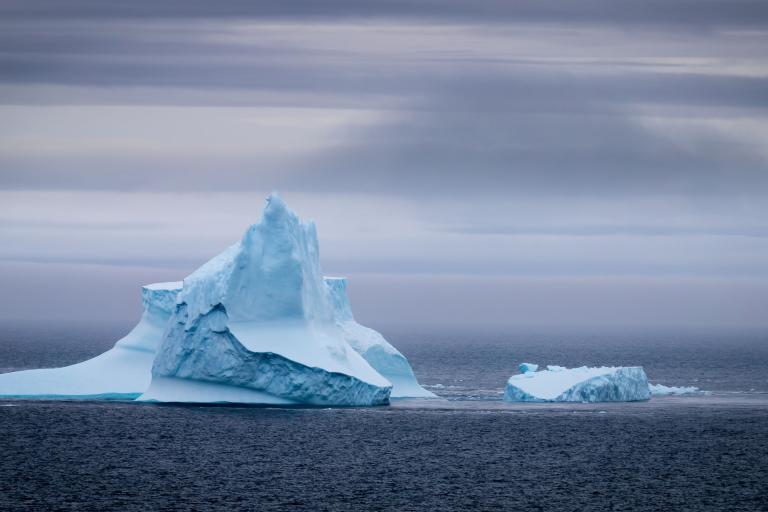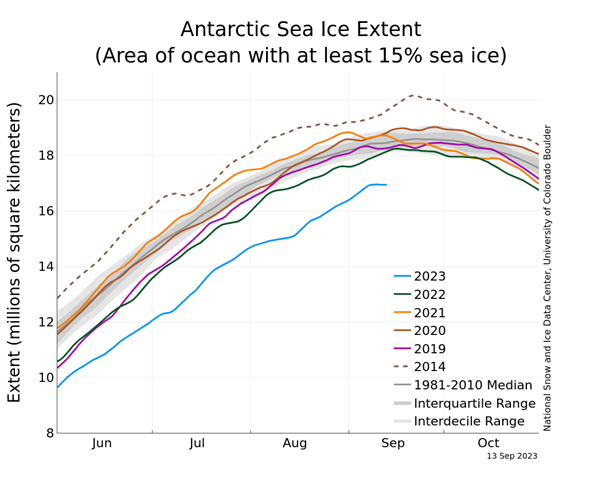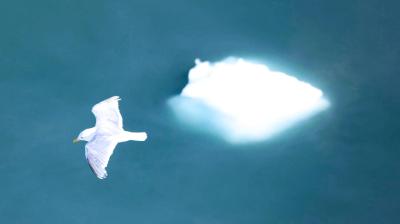Antarctic sea ice reaches lowest winter extent on record
Antarctic sea ice has reached its maximum extent after the cold dark winter months. According to the preliminary data from the US National Snow and Ice Data Center (NSIDC), the maximum extent remained below 17 million square kilometers (6.56 million square miles) for the first time in the satellite record (1979 onwards). This is a full million square kilometers (386,000 square miles) below the previous record low in 2022 – more than the size of Egypt.


The maximum, which was reached on 10 September, t was about 1.75 million square kilometers (676,000 square miles) below the reference mean (1981 – 2010), according to NSIDC. This absence of Antarctic sea ice is associated with unseasonably warm sea-surface temperature across the Southern Ocean as well as warmer atmospheric surface temperature over much of wider East Antarctica and associated adjustment of the large-scale atmospheric circulation over the Antarctic. Of particular concern is the sheer scale of the difference from the long-term seasonal evolution.
Scientists with WMO’s Global Cryosphere Watch and the wider research community are monitoring whether this is part of the normal variability around the windswept frozen continent or whether it is the start of a new, worrying state as a result of excess greenhouse gases in the atmosphere and ocean.
“The 2023 Antarctic sea-ice deficit has direct impacts on the climate- and ecosystems, both nearby as well as far field, including at lower latitudes, which are home to the majority of human population and their economic interests,” said Dr Petra Heil, an expert from the Australia Antarctic Division and part of WMO’s Global Cryosphere Watch.
Antarctica’s huge glacial ice expanse and the surrounding sea ice cover are critical to regulating the climate because it reflects the sun’s energy back to the atmosphere and space. In contrast, the dark ocean surface absorbs most of the sun’s incoming energy. So, less sea ice contributes to increasing temperatures – thus accelerating a vicious cycle.
”There is growing concern about rapid changes in the cryosphere – melting sea ice, ice sheets and glaciers,” says Omar Baddour, chief of climate monitoring at WMO. “The drop in Antarctic sea ice this year has been really dramatic. What happens in Antarctica and the Arctic affects the entire globe,” he says.
Arctic sea ice extent is in long-term decline – this year’s summer minimum extent was the eighth lowest on record. Until relatively recently, Antarctica was thought to be relatively stable. Since 2017, the area from the Weddell Sea westwards towards the Ross Sea in the southernmost part of the Pacific Ocean has marked itself with a more or less constant low extent of sea ice.
“The monthly mean sea-ice extent has been the lowest on record in the months of January, February, May, June, July, and August 2023 in the 45-year-long data record. September 2023 will most probably also be a record low monthly average and become the absolute lowest mean winter ice extent ever observed in the Antarctic,” said Thomas Lavergne of the Norwegian Meteorological Institute.
“The total ice extent in the Antarctic is continuing to track at extreme record low levels, with departures from the long-term average of more than three standard deviations,” said Dr Gorm Dybkjær (Danish Meteorological Institute). Effectively this means that the event is extremely rare and suggests the physical system may have switched into another state. That is an extraordinary extreme event.”
The Antarctic sea-ice deficit in the winter of 2023 follows directly from the two lowest summer minima in 2022 and 2023.

Impacts on wildlife
As evidence of the impacts, Emperor penguin colonies experienced unprecedented breeding failure in a region of Antarctica in the central and eastern Bellingshausen Sea where there was total sea ice loss in 2022, according to the British Antarctic Survey. The discovery supports predictions that over 90% of emperor penguin colonies will be quasi-extinct by the end of the century, based on current global warming trends, it said.
The researchers said there was a high probability that no chicks had survived from four of the five known emperor penguin colonies. This was based on satellite images that showed the loss of sea ice at breeding sites, well before chicks would have developed waterproof feathers.
Background
The Antarctic climate and sea ice extent is subject to large natural variations from year to year and are influenced by the high winds in this remote part of Earth which spans 14 million km2 (roughly twice the size of Australia). The average annual temperature ranges from about −10°C (14°F) on the Antarctic coast to −60°C (-76°F) at the highest parts of the interior.
The Antarctic Peninsula (the northwest tip near to South America) is among the fastest warming regions of the planet, almost 3°C over the last 50 years. Remote East Antarctica, by contrast, has until recently been less impacted.
The Intergovernmental Panel on Climate Change report on the Physical Science Basis – part of its ongoing Sixth Assessment Report - stated that “Observations show a widespread, strong warming trend starting in the 1950s in the Antarctic Peninsula. Significant warming trends are observed in other West Antarctic regions and at selected stations in East Antarctica (medium confidence).”
WMO’s Congress in May 2023 agreed to elevate the cryosphere to one of its top priorities, given the increasing impacts of diminishing sea ice, melting glaciers, ice sheets, permafrost and snow on sea level rise, water-related hazards and water security, economies and ecosystems.
“A particular area of focus is that on monitoring and improvements in standardization and distribution of in-situ and satellite data over Antarctica, the data assimilation, and the communication of uncertainties as they relate to impacts,” said Dr Rodica Nitu, who is responsible for the Global Cryosphere Watch programme at WMO.
Datasets
Additional graphical information on Antarctic and Arctic sea ice is available at: WMO’s Global Cryosphere Watch network uses three datasets:










